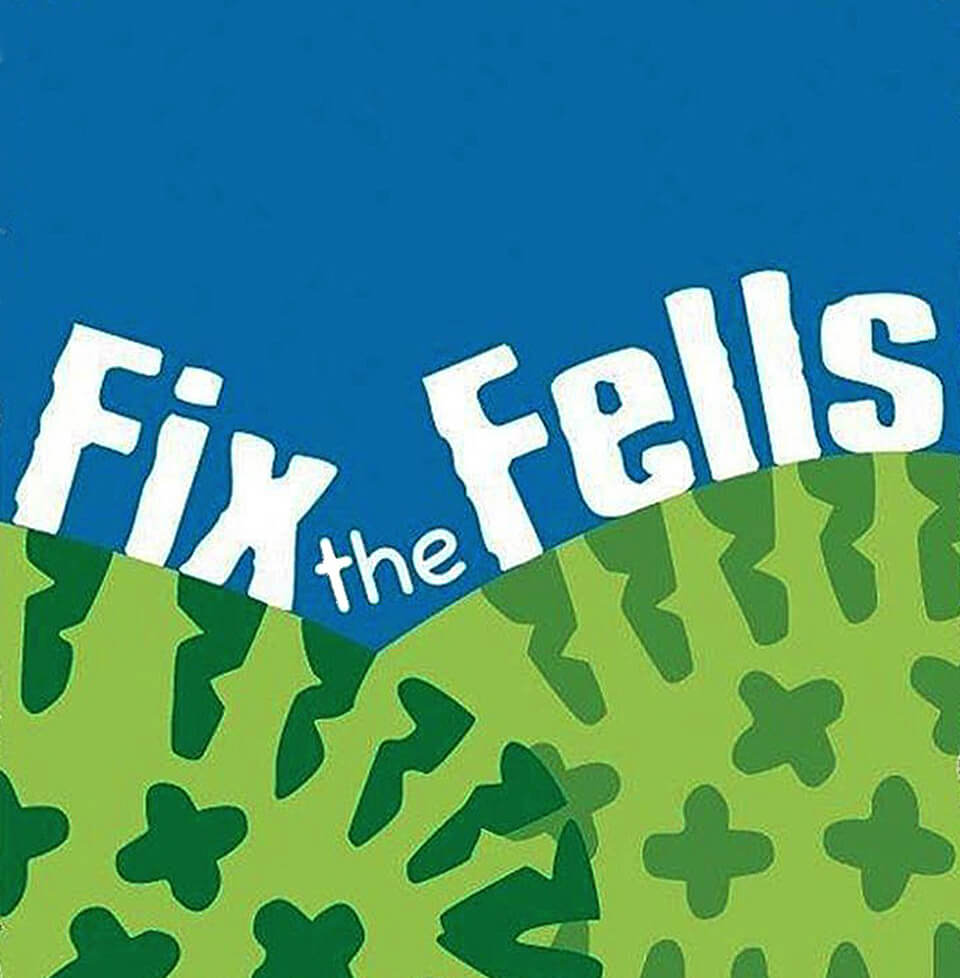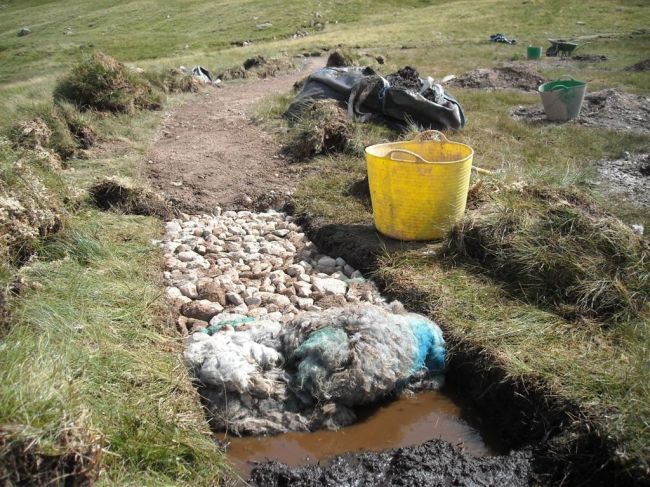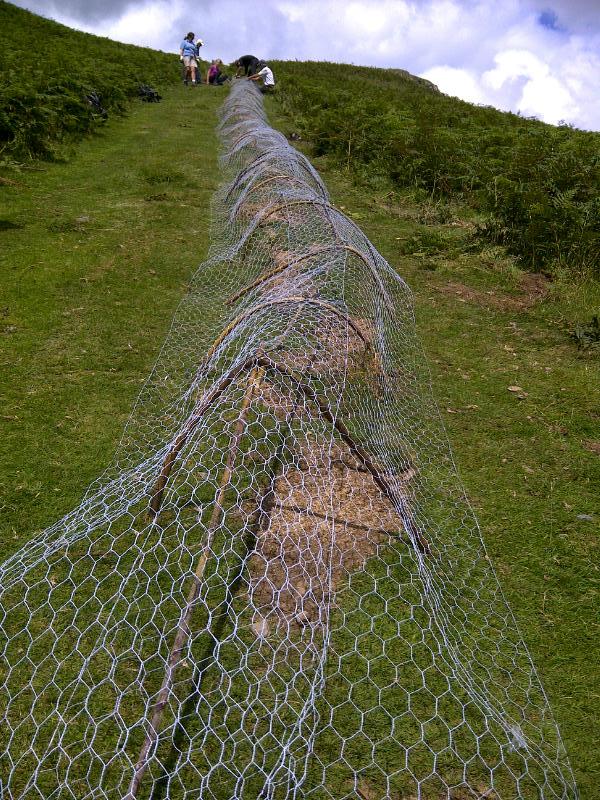Erosion
Path erosion is not a new phenomenon. But with 18 million visitors coming to enjoy the beautiful and inspiring Lake District each year, it is something that needs to be managed. The fells are there for everyone to enjoy but in the same way your walking boots experience wear and tear from walking, so too do the paths on which they tread. The erosion caused is exacerbated by the gradient of the path and the Lake District weather.
Erosion is basically the progressive loss of grass or vegetation and soil. When the grass or vegetation is trampled, the soil is exposed and is at the mercy of the elements. Rainfall washes soil away and gradually paths turn into channels with water running down them that become deeper over time. When the paths then become difficult to walk on, people tend to walk on the side, making the problem worse and creating scars that can be seen from miles away. Eroded paths are not only unsightly, but can lead to habitat loss, water pollution and damage to the archaeological and natural history of the area.
See our Path Erosion Factsheet


